September was a cold windy month with sporadic rain and occasional snow. October had some real fall weather; November – well, it’s November. Could be better, could be worse.
September’s wind and rain soon did away with the leaves.
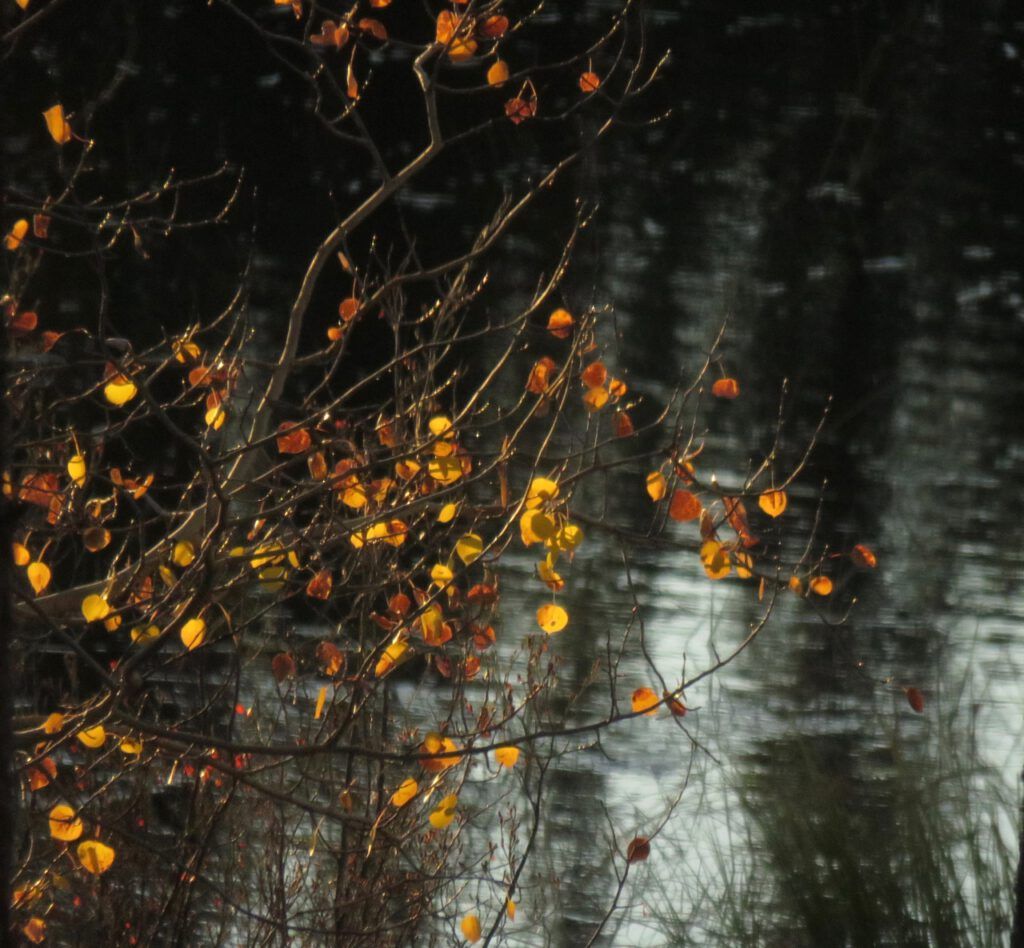
The squirrels started collecting mushrooms.
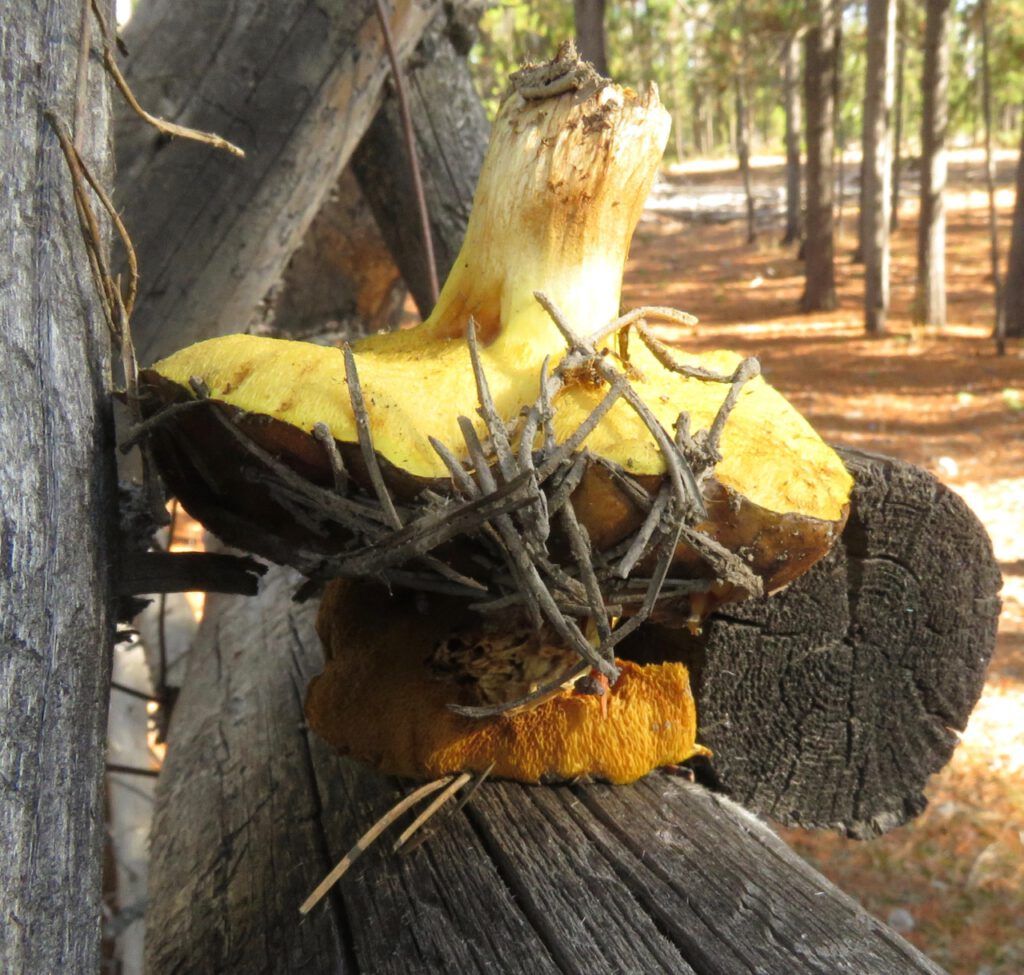
The late fall sunrise hit the last of the leaved cottonwoods along the river.
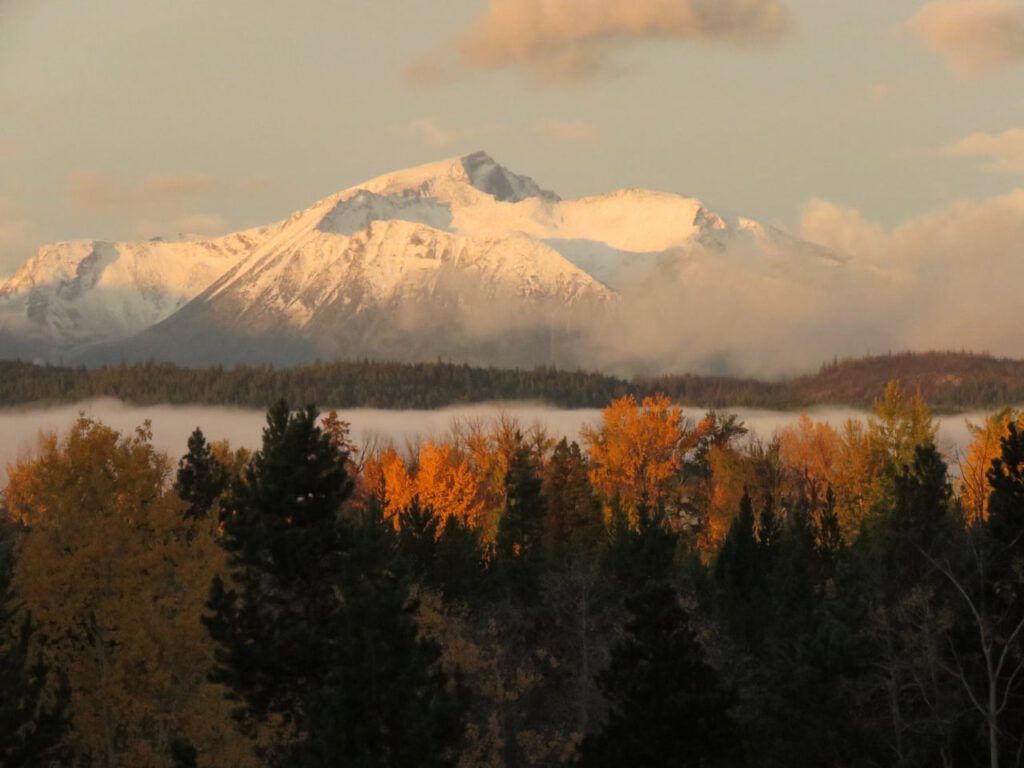
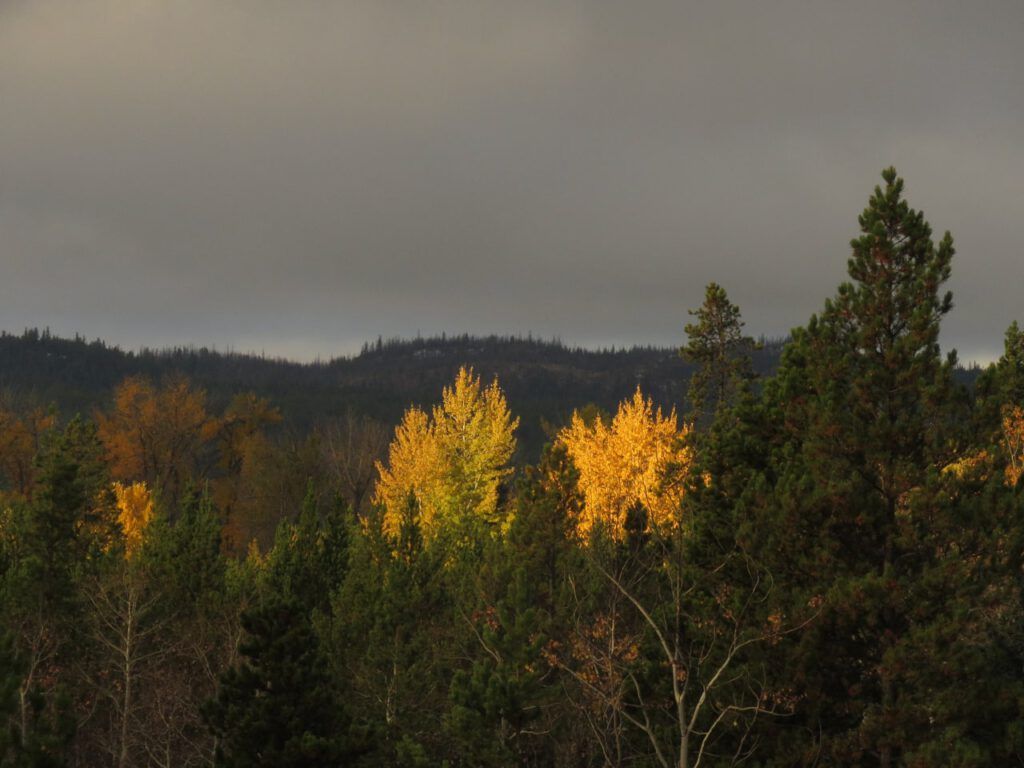
I finished harvesting what I could out of the garden. The kale survived a few of these frosts, but finally succumbed.
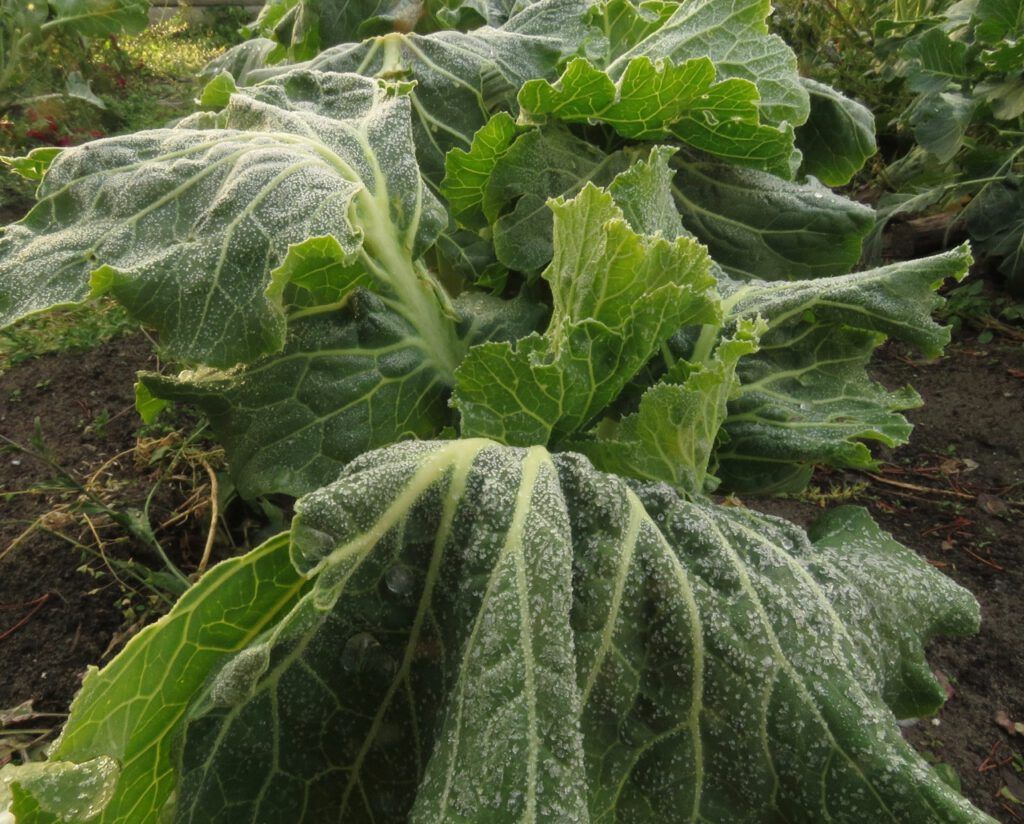
The yellow in the trees faded.
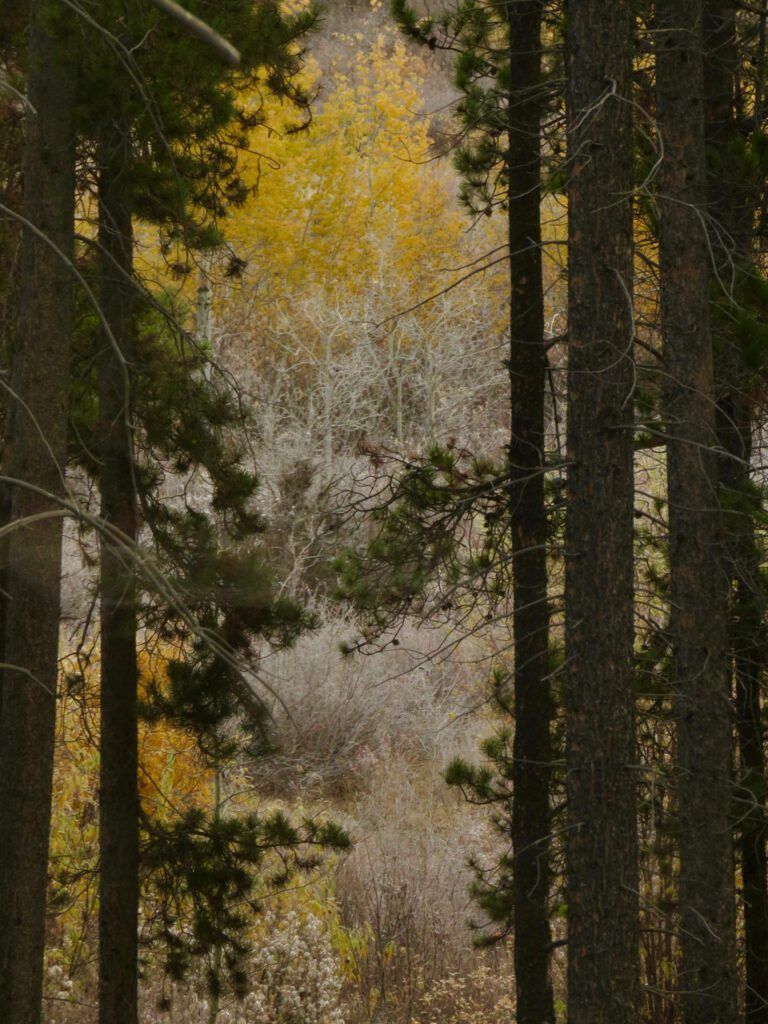
A wintry sunset east of Tatla Lake
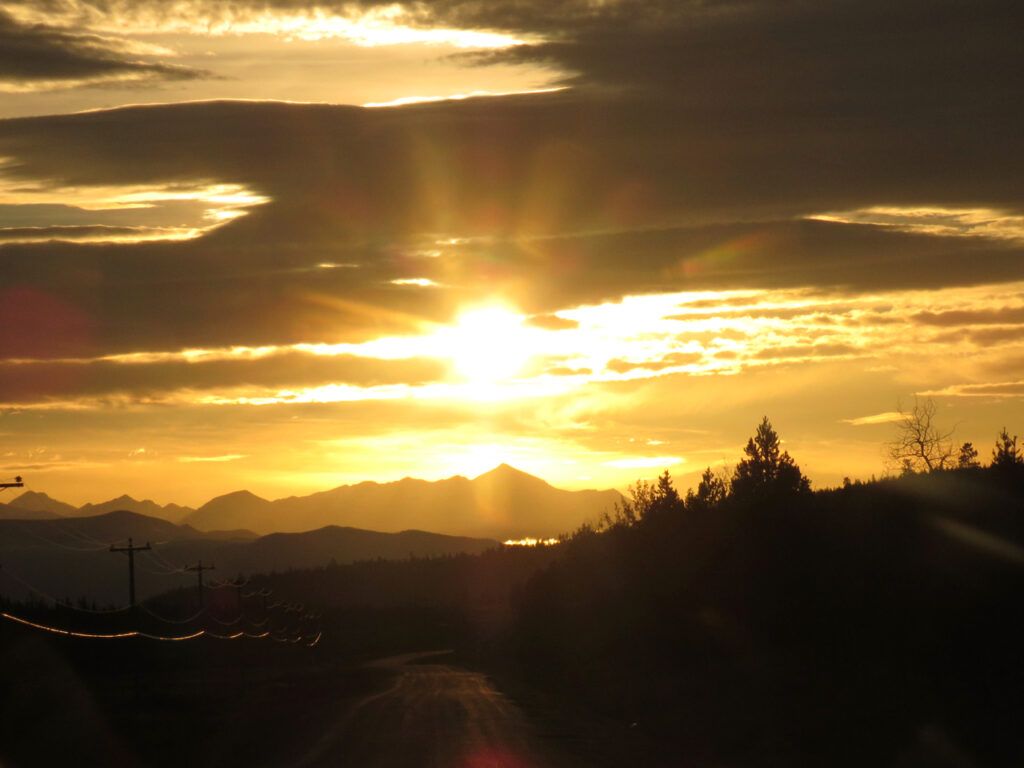
I had been to town and I reached Pollywog Marsh right on sundown. About 50 trumpeter swans, who are moving south for the winter, were enjoying the feeding spot.
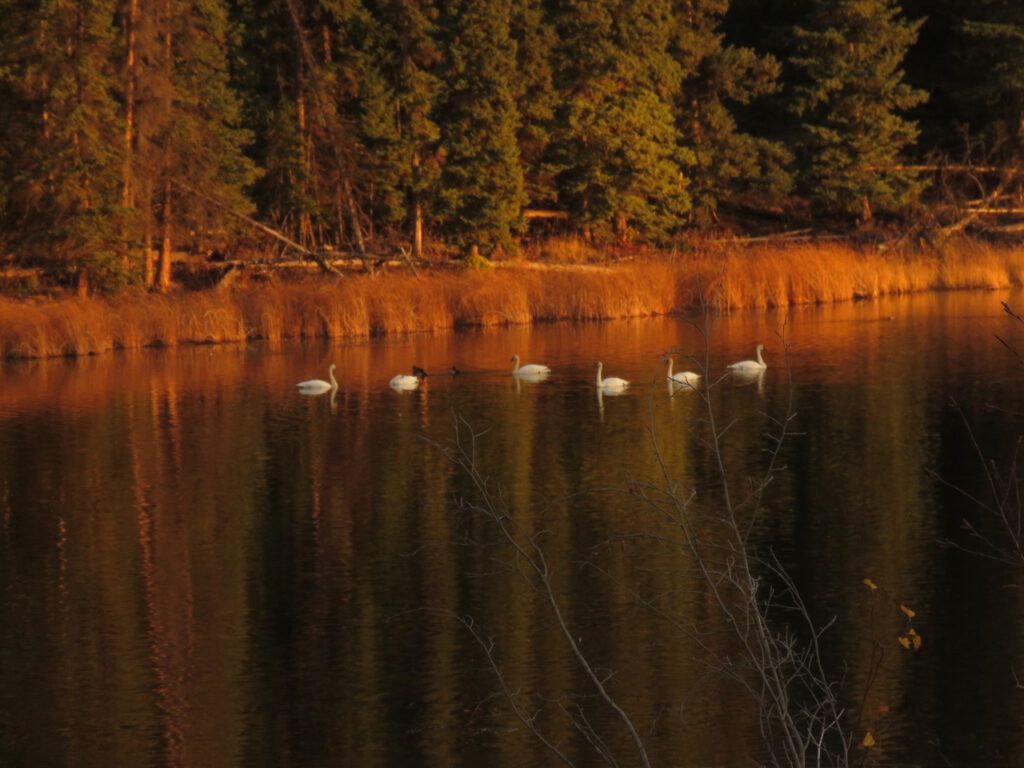
Sun was now in short supply. Often we had only gleams in the mornings and evenings as we segued into November.
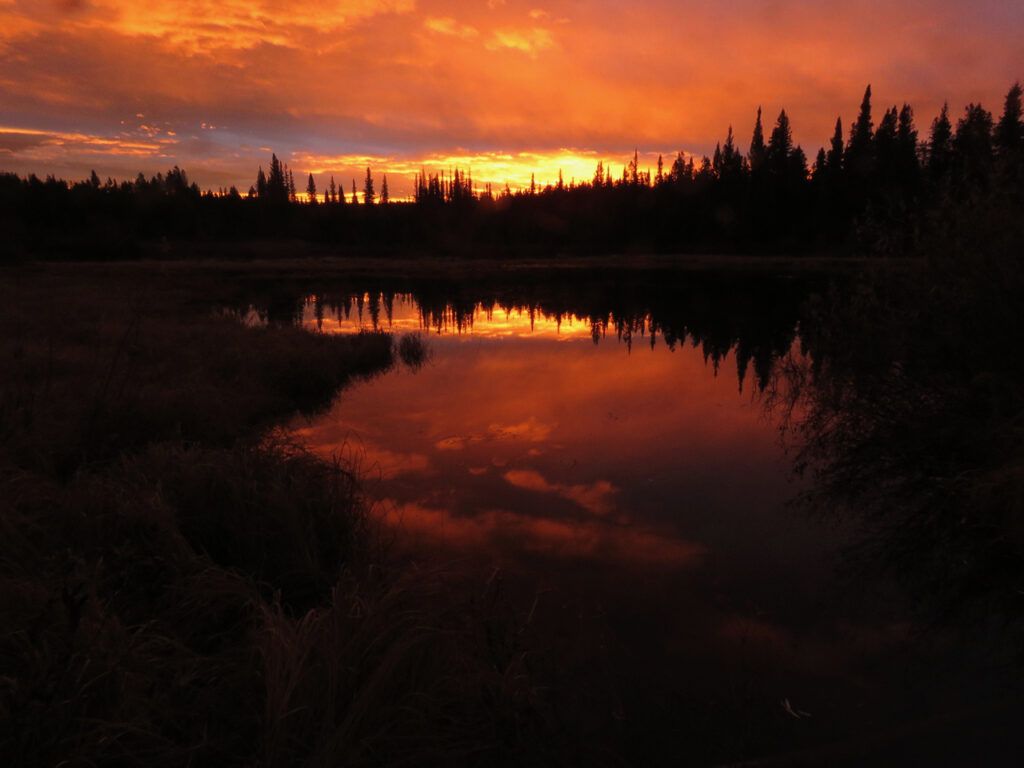
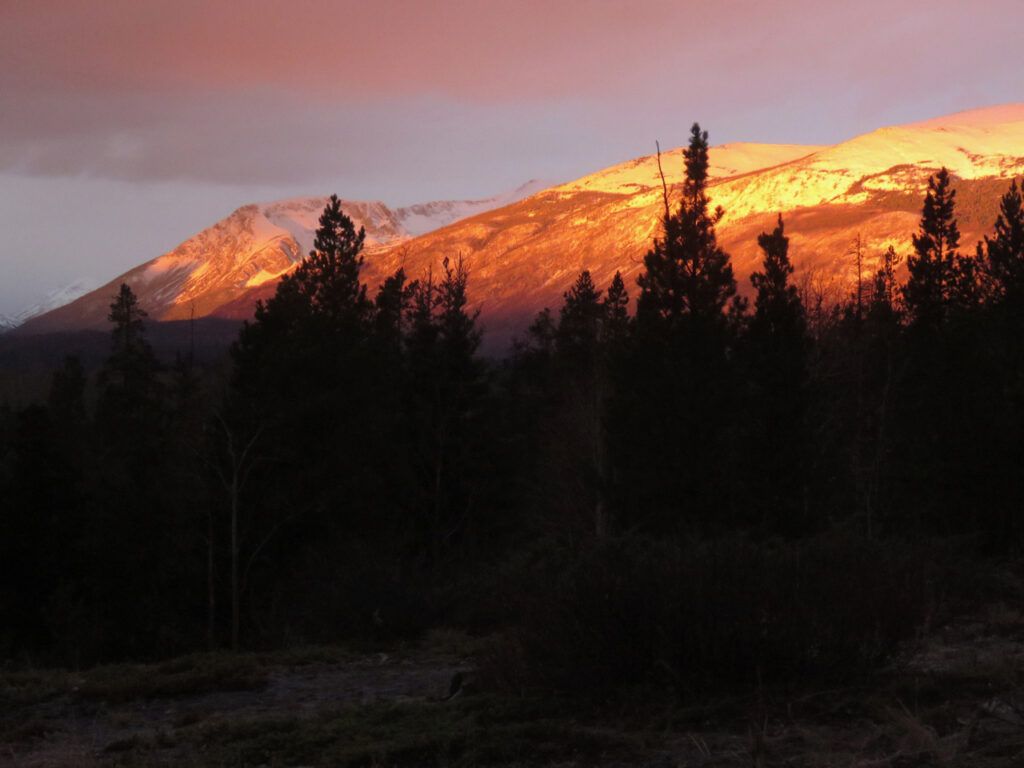
There was heavy smoke in the air so reminiscent of the summer, but this time it was the slash piles that were being burned. A south wind so the smoke stayed high. I did not even notice that the piles along my road were also being burned. What a shame. But my truck was in a precarious state, needing a new transmission, and I had not dared to use it to get some of the wood. The piles had to be disposed of to prevent some idiot setting fire to them at a dangerous time. This happens.
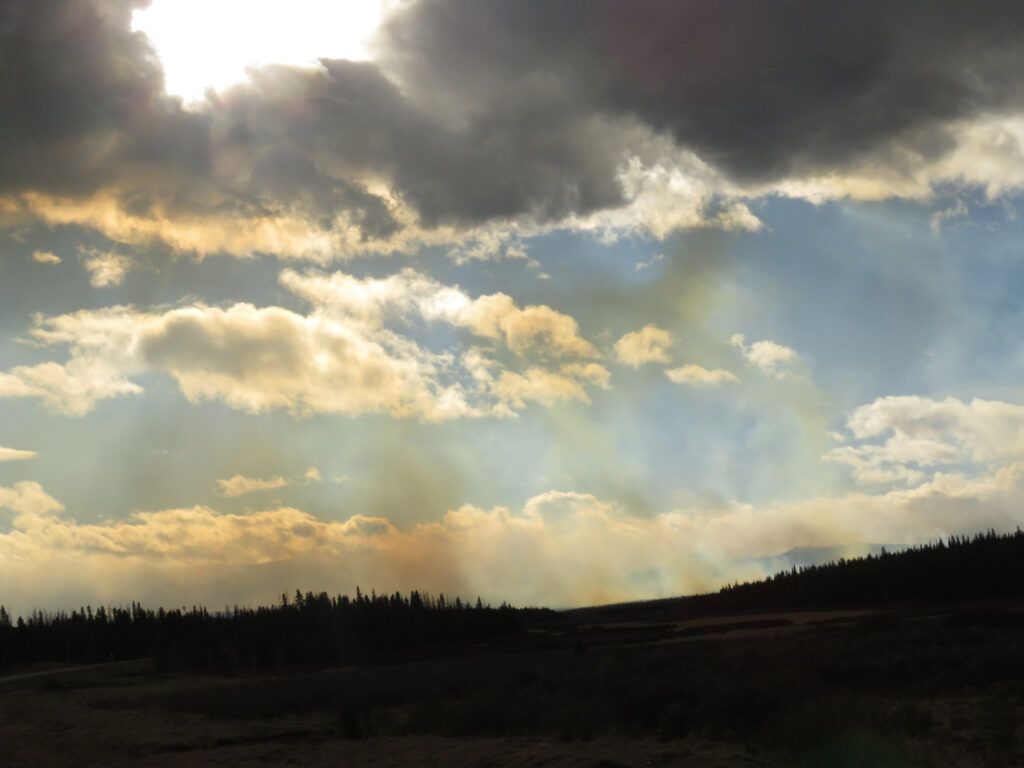
The last of the leaves collected in the ditches.
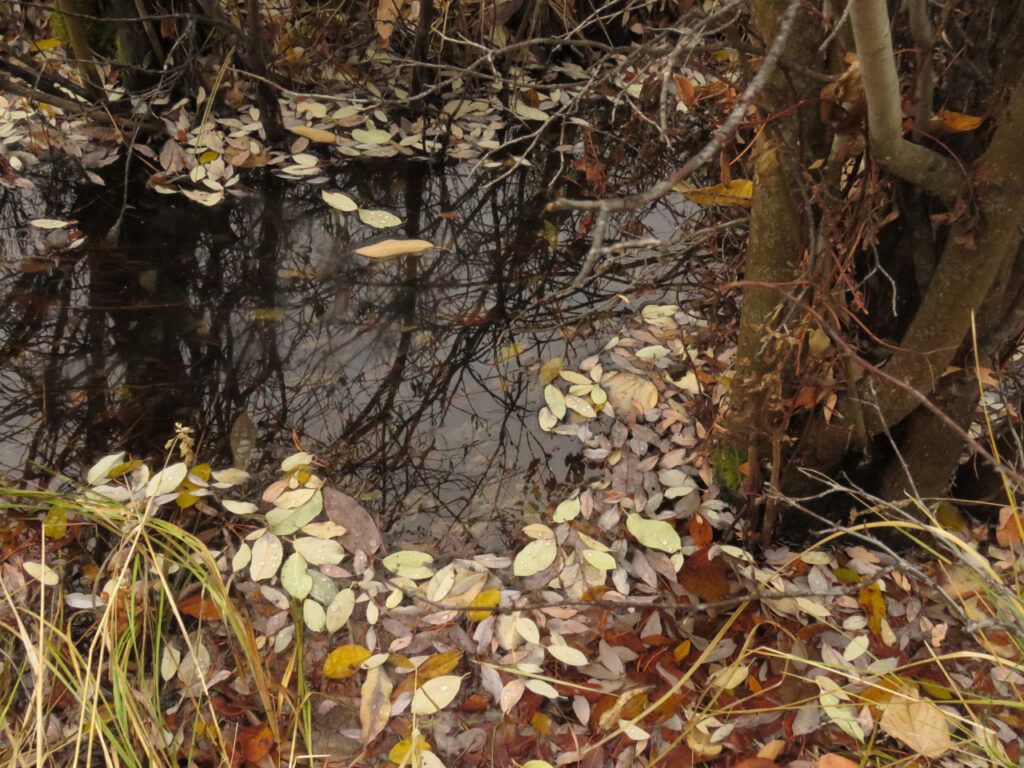
Some mornings were heavy with frost.
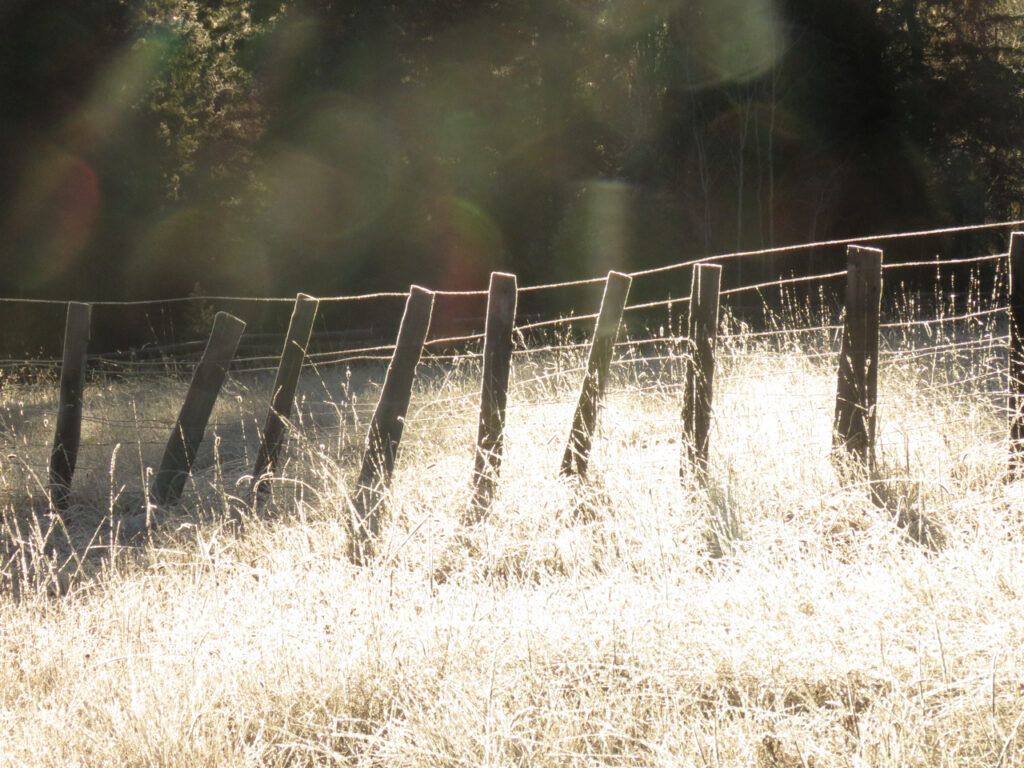
The pond froze and thawed and finally froze over.
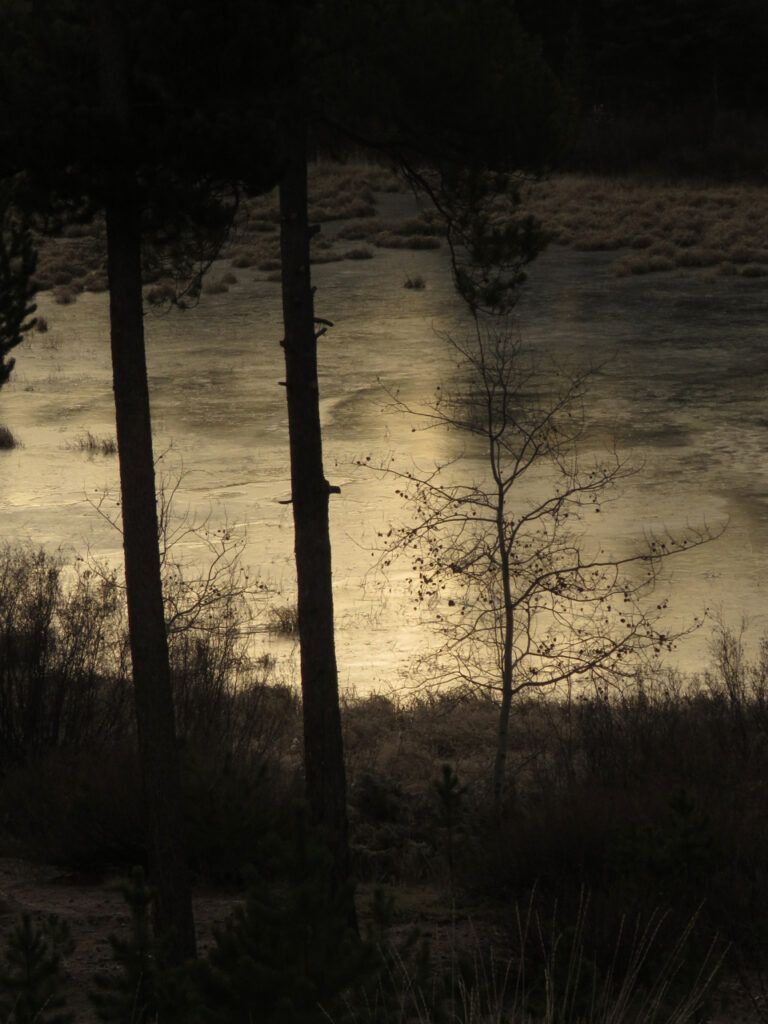
I started feeding the birds. As well as the usual cast of chickadees, woodpeckers, and Clarke’s nutcrackers, I also have a nuthatch as a regular visitor. For some reason I have seen them only occasionally here, but this one comes every day. It hangs out with the chickadees -and beats them up!
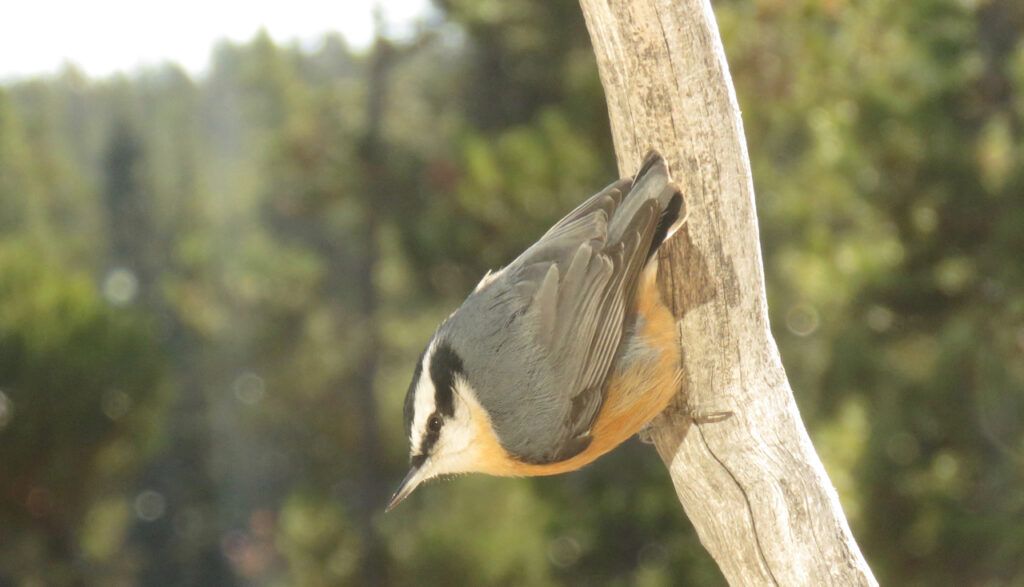
One afternoon the sky grew the darkest I’ve ever seen it in the daytime, and we had a furious blizzard.
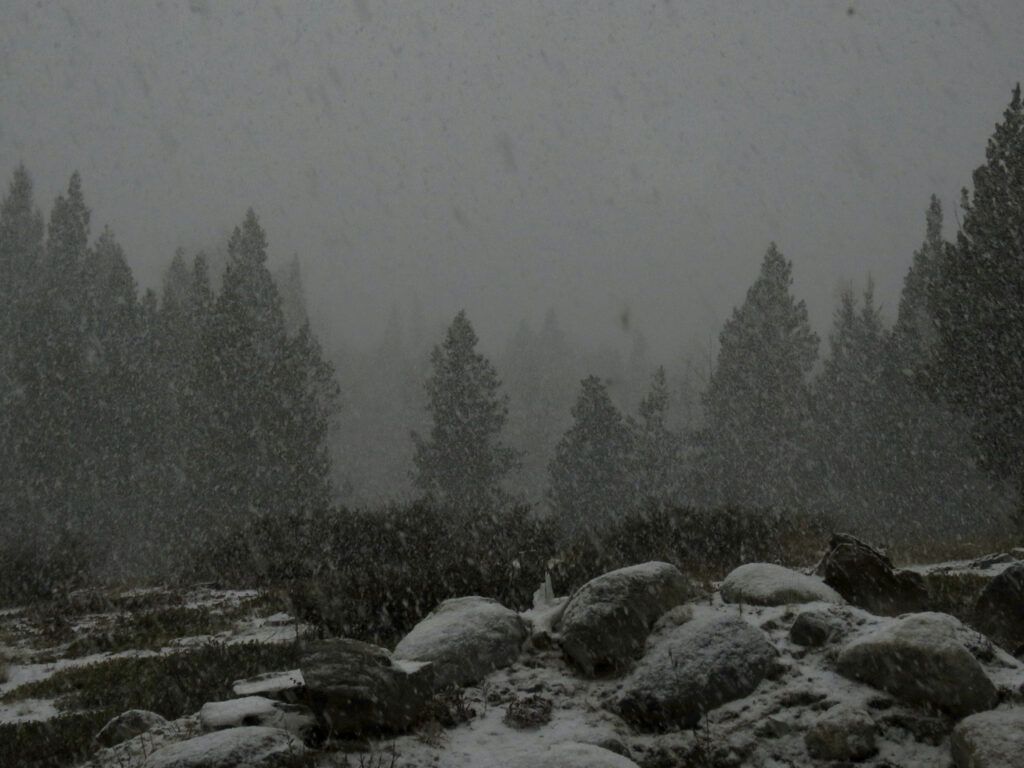
Fortunately it didn’t last too long and the snow accumulation wasn’t great, but the pond turned white.
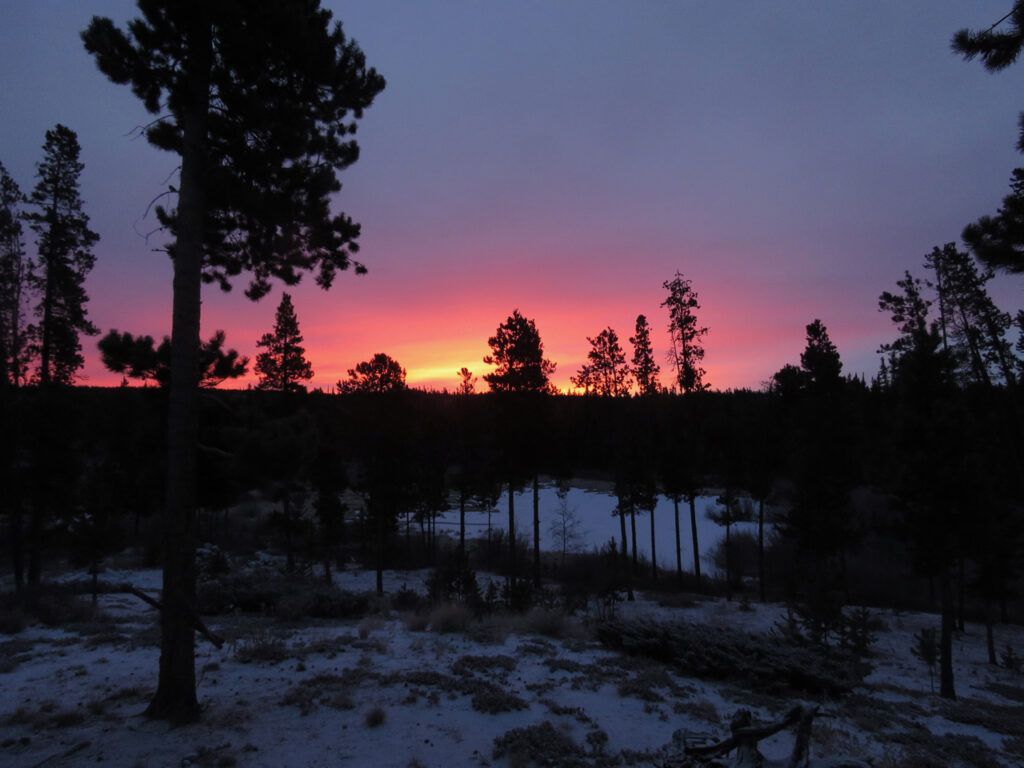
Back into the routine of brushing off the solar panels.
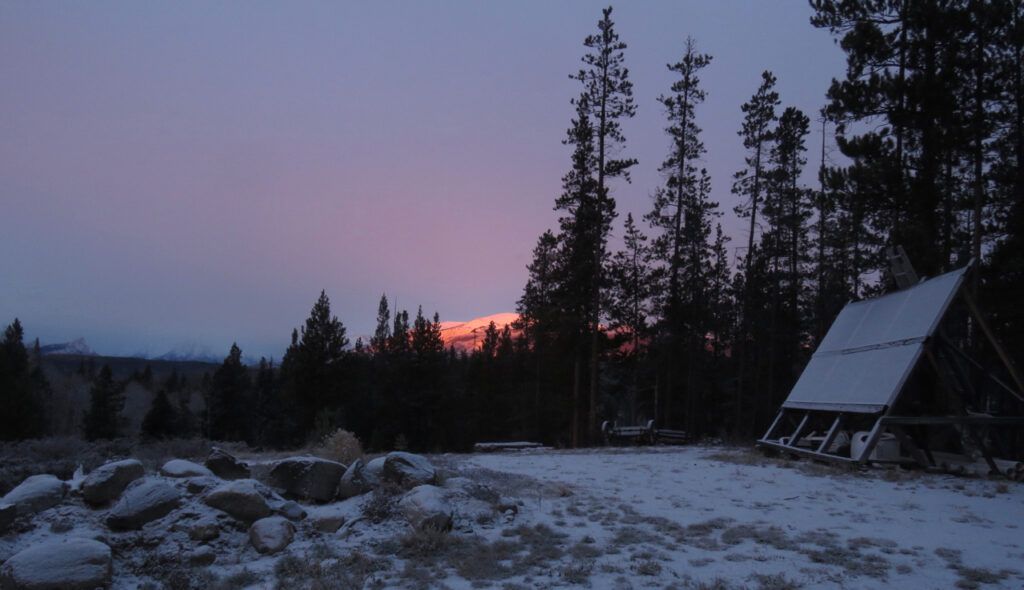
The trail camera on my road picked out a couple off deer.
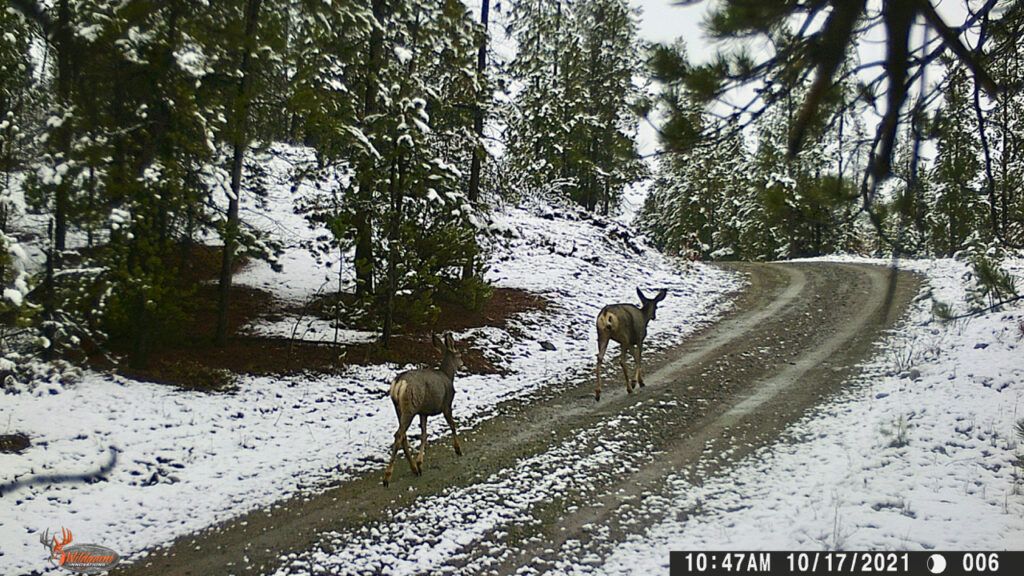
Some mornings the light was barely there.
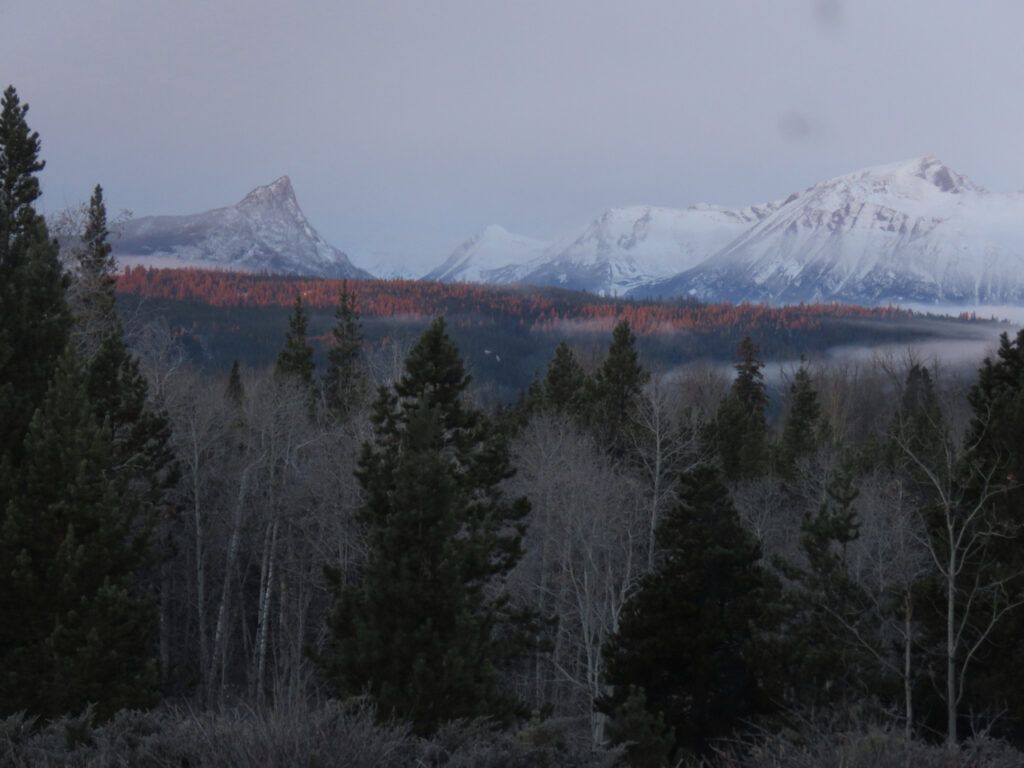
Other days were quite pleasant. I had to run the generator to charge my solar batteries three times in September, but have not used it since.
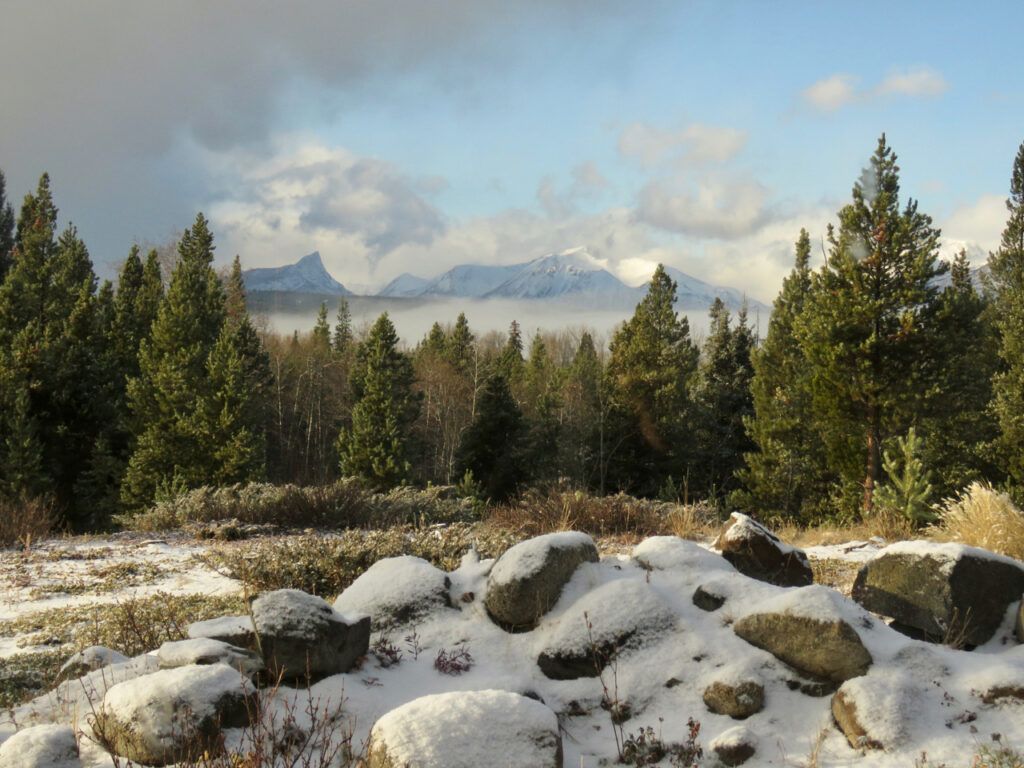
I went for a hike to the north, somewhere I haven’t been since the spring. I have seen beaver in my pond since it filled up (the firefighters drained it) but the animals had moved upstream. They had dammed a little puddle and made it into a fairly large pond, but it was pretty shallow. They had built on it the biggest beaver house I’ve ever seen. Must be ten feet tall.
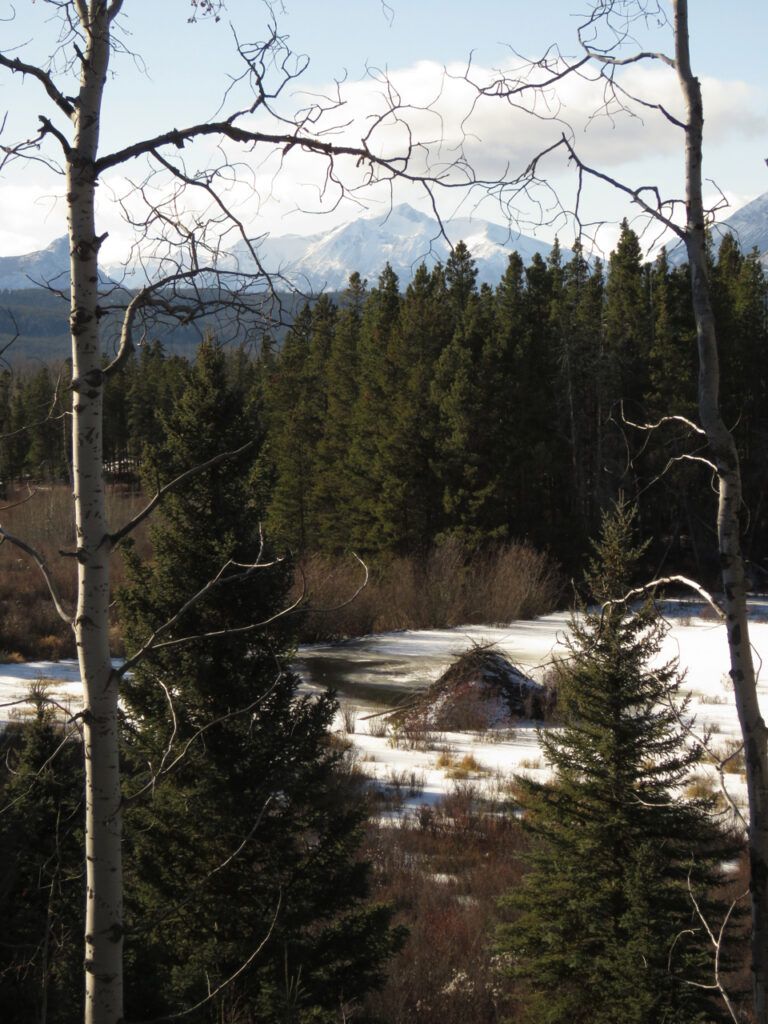
We were promised clear, cold weather around the full moon and the sky became cloudless. The low sun cast a strong light onto the bare willow bushes.
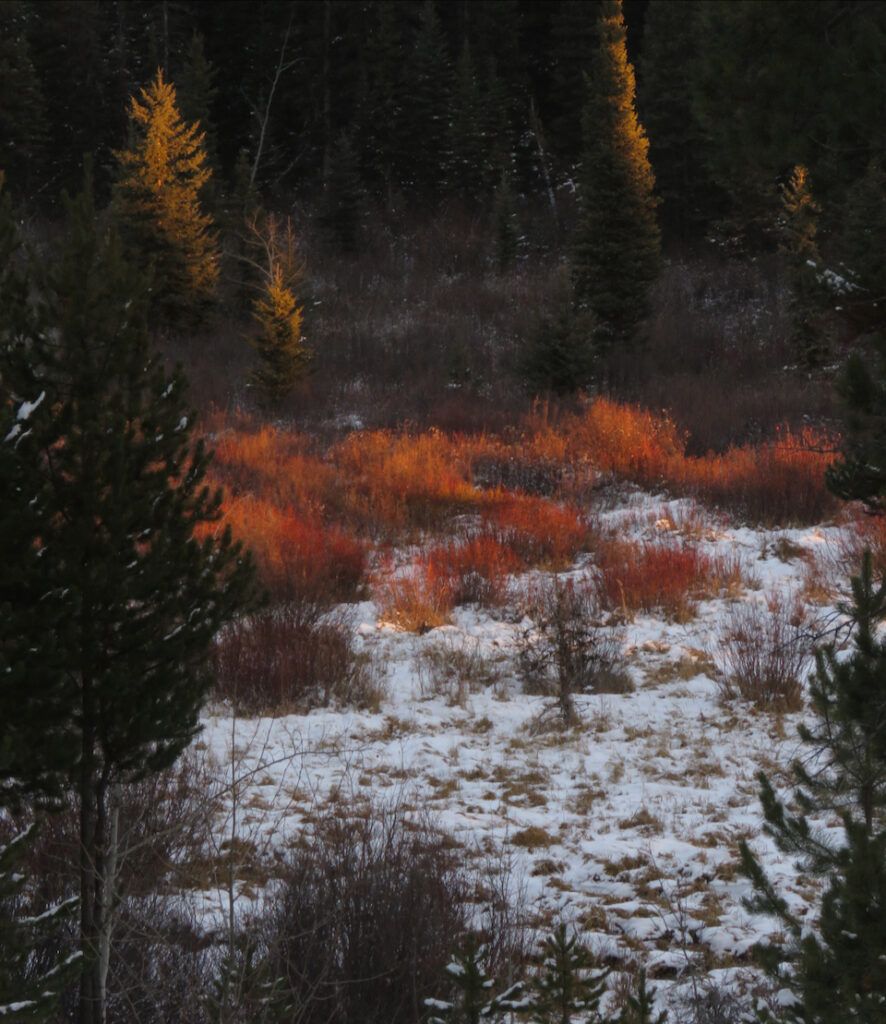
It made a pillar of light as it set . That happens when there are a certain type of ice crystals in the sky.
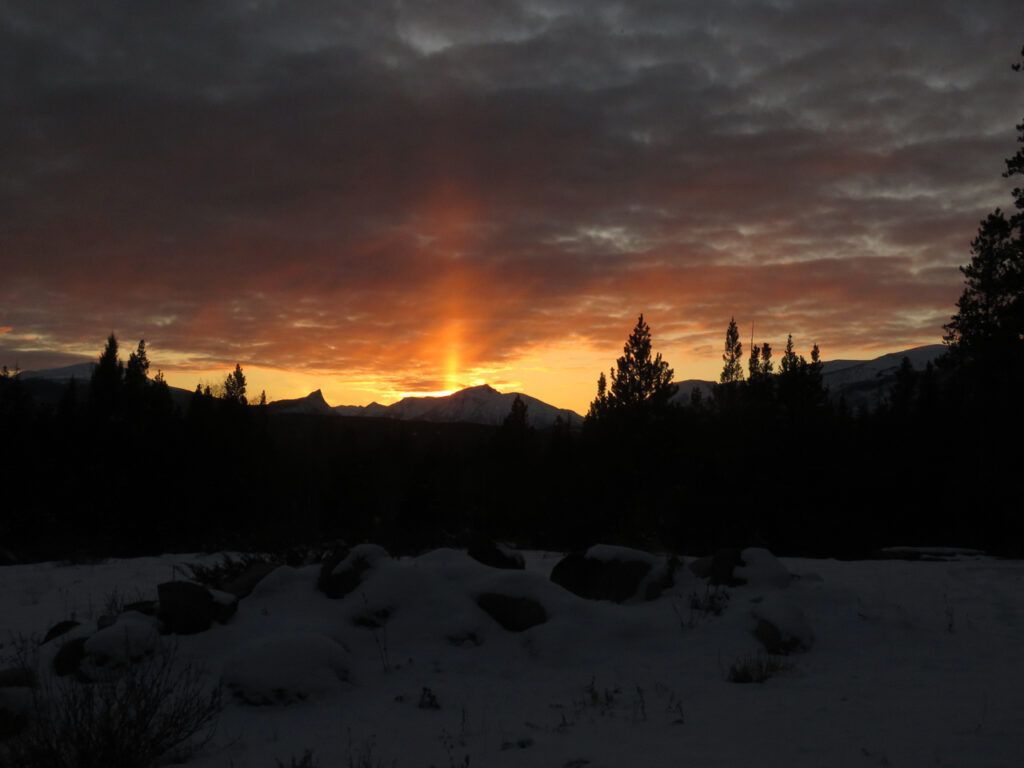
The temperature dropped to -19C that night. I sleep in a bay window with a skylight and was able to stay toasty in bed while viewing the full moon’s not quite complete eclipse. During the dark phase, the stars shone like lanterns.
I have no pictures of the trip to town to finally get the transmission fixed as almost all the travel was in the dark. I left at 4.30:am on 15 Nov and had to watch for ice and deer. I looked forward to the daylight seeping through the overcast, but then I hit a wild blizzard that soon put a slick skin of wet snow on the road. Majorly slippery. Williams Lake was a degree or two warmer so, although snow fell all day, the roads were bare and wet. I stayed with friends overnight and the following day was sparkling. I was unable to leave until close to sundown, however, and first I had to contend with ice then a road that was white. It had been ploughed, and by that time it was -8C so not as slippery, and the moon lit my way beautifully.
This was the northern tip of the terrible weather system that hit the lower mainland. Every road out of Vancouver was blocked either by floods, washouts, or mudslides. Hundreds of people were evacuated, livestock died, some were rescued by boats. Most of the flooding happened when dykes burst onto dairy farming land. These and chicken farms were the hardest hit.
Because the roads were cut off, groceries did not make it to Williams Lake and when I tried to get fresh produce, not only were the shelves bare but the line-ups at the checkouts were insane. Fortunately I am already well stocked for winter; it is only greens and the like that I’m lacking. Groceries to the BC interior will have to be trucked either via the States or from Alberta. The Chilcotin gets its groceries from Alberta anyway so I expect that by the time I get to Nimpo store, produce will be much as usual (although they have nothing organic and a poor selection.) There will be scarcities and price hikes but I know I will still be well off. The poor people down south will have a long road to recovery in cold, wet conditions. So far four deaths have been recorded.

I love your pictures and your posts.
Living down here in the lower 48 it’s hard to imagine your lifestyle – but love reading about it.